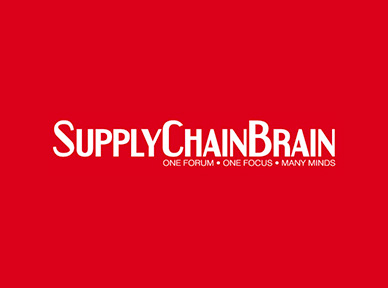You’ve got the product and the packaging, and you’re ready to ship, but if the six-digit Harmonized System (HS) code on your commercial invoice is off, even slightly, you’re opening the door to serious problems.
Although a simple mistake, it unfortunately isn’t a rare one. Misclassified goods raise red flags with customs authorities, and in global trade, small errors don’t stay small for long.
Let’s break down why HS codes matter so much and how the wrong one can throw your whole supply chain into chaos.

What Is an HS Code And Why Does It Matter?
HS codes enable countries around the world to speak the same language when it comes to classifying traded goods. Created and maintained by the World Customs Organization (WCO), this global system is used by more than 200 countries to help enforce trade rules, calculate tariffs, and keep supply chains moving.
At its core, an HS code is a six-digit number that tells customs exactly what’s in the box. Those first six digits are standardized globally under the Harmonized System. Many countries then add extra digits to the base HS code—creating a longer national tariff code—to capture additional details for their own regulations, statistical tracking, or duty rates. So while the base code stays consistent, the full number may look different depending on where your product is going.
That’s why you’ll hear different terms, such as:
- HTS code – used for imports into the United States
- Schedule B code – used for exports from the United States
- TARIC code – used within the European Union
These codes show up everywhere, including on customs paperwork, shipping labels, invoices, and import declarations. And they influence a lot, including:
- How much duty you’ll pay
- Whether your product clears customs smoothly
- Whether you qualify for a free trade agreement
- How your products are counted in international trade data
The simplest way to think of an HS code is as a global product barcode, and if incorrect, a lot can go wrong with the rest of your shipment.

Common HS Code Mistakes That Can Cost You
Getting your HS code right is a core part of accurate product classification. Given how complex the classification of goods can actually be, it’s not surprising that even well-meaning businesses can get it wrong.
Here are some of the most common and costly missteps.
1. Using Outdated Codes
The WCO revises the Harmonized System every five years, but individual countries often update their national extensions of the HS code more frequently to reflect trade priorities, regulatory shifts, or statistical tracking needs. If you’re working off an old code lookup table or pulling from a past invoice, you might be misclassifying without even knowing it.
2. Copying from Similar Products
Close is still wrong. One DTC skincare brand classified a new acne spot treatment as a generic moisturizer, but because the product contained active medicinal ingredients, customs reclassified it under a different tariff code—one with significantly higher customs duties. That one mistake triggered delays and financial penalties. Unfortunately, it looked like a lotion, but it wasn’t. And the coding system doesn’t care how it looks; it only cares how it’s defined.
3. Trusting Supplier Classifications
Suppliers often assign codes based on what works for their internal systems or local rules, but that doesn’t mean their codes are valid for your market. Before you use a supplier’s code, verify it with your country’s official database. While the first six digits of the HS code are standardized globally, the additional national digits—and how customs authorities apply them—can differ from one country to another.
4. Guessing Based on the Product Name
The HS system is based on materials, usage, and packaging. Just because your product sounds like sportswear doesn’t mean it should be classified as such. If you’re not checking the specifics, you’re playing a high-stakes guessing game.
5. Overlooking Product Changes
Even a small shift, such as swapping a plastic part for metal, changing the product’s use case, or modifying how it’s packaged, can change a product’s classification. Any change in formulation, structure, or end use requires taking a second look at the HS code.
The Risks of Getting It Wrong
Misclassify a product, and there’s a lot at risk. Here’s what could go wrong.
Customs Delays
Incorrect codes can trigger scrutiny from customs authorities. A mismatched product description or inconsistent tariff code can cause your shipment to be pulled for manual review, slowing down your operation and adding unexpected delays to your delivery windows.
Fines and Penalties
Every country handles misclassification differently, but most have one thing in common: They don’t take it lightly. If your code results in underpaid duties, you could be hit with penalties, back payments, or audits. Repeat violations might even land your company on a watch list.
Overpaying Duties
This one stings. Entering a tariff code with a 12% rate instead of the correct 4%? That’s an 8-point hit to your margins multiplied by every shipment. And you might never realize it unless someone catches the error downstream.
Shipment Returns or Destruction
Some product categories—especially electronics, cosmetics, and precious metals—trigger additional actions. If customs classifies your product as belonging to a restricted or controlled category (whether or not that’s accurate), it could be returned, destroyed, or denied entry. That’s a heavy price to pay for skipping a proper code lookup.

How to Make Sure Your HS Codes Are Correct
- Start with the right tools
Use official sources, such as the U.S. International Trade Commission’s HTS code search or the EU TARIC system for your code lookup. Avoid unofficial websites. They’re often outdated or inaccurate, and relying on them can lead to costly misclassification. - Match product specs to the code
Your HS code should reflect the exact product classification. That means considering materials, function, and a clear, specific product description. The more precise you are, the greater your likelihood of getting the tariff code correct. - Understand the structure
Digits 1 and 2: product chapter (e.g., “61” = apparel)
Digits 3 and 4: product heading (e.g., knitwear vs. woven)
Digits 5 and 6: subheading, which further narrows the classification—often by material, product type, or intended use.
Additional digits: used by individual countries for things such as preferential tariffs, statistical tracking, and regulatory requirements - Stay current
The Harmonized System gets updated regularly at the global level, and each country—including the U.S.—updates its own extended tariff schedules more frequently. For U.S. businesses, that means keeping both your global HS codes and your U.S.-specific Schedule B or HTS codes current. - Lean on the experts
A licensed customs broker or trade compliance consultant can help you avoid mistakes and stay aligned with global classification of goods. If you work with a shipping partner like ePost Global, you’ll also benefit from platforms with built-in code validation and support for customs duties, documentation, and free trade agreement eligibility.
How ePost Global Helps with HS Codes
At ePost Global, we help you navigate the complex world of global trade compliance. Before anything leaves your warehouse, our team helps review product details and ensure the codes on your commercial invoices align with current regulations. Our system includes automated HS code checks, but we don’t stop there. We also bring human expertise into the process, because sometimes what matters isn’t just the six-digit base code, but how the additional national digits are interpreted by customs officials in different countries.
We help you understand how each country’s extended tariff schedule—built on the six-digit HS code—is applied in different regions, whether you’re shipping from the U.S. to the European Union, the Asia-Pacific, or elsewhere.
And if something goes wrong—such as a misclassification or a hold at customs—we stay with you. We help untangle the issue, organize the paperwork, and work with your partners to resolve it. You don’t have to figure it out alone.
At the end of the day, our job is to protect your shipments, your timelines, and your relationships, so one code doesn’t throw off your entire operation.
Don’t Let a Code Derail Your Shipping
The HS code might feel like a small detail, but it’s a foundational piece of the puzzle in international trade. One incorrect code can create ripple effects.
ePost Global is here to help you stay compliant, competitive, and confident in every market you ship to. Let’s simplify the HS code process together, so you can focus on growth and not red tape.
Reach out to our team to get started.
HS Code FAQ
Q: What’s the difference between an HS code and an HTS code?
The HS (Harmonized System) code is a six-digit global coding system used to classify traded products. The HTS (Harmonized Tariff Schedule) code is the U.S.-specific extension, used for imports into the U.S. It builds on the HS code by adding extra digits for national regulations, tariffs, and reporting needs. Other regions have their own versions too, such as the EU’s TARIC or Canada’s Customs Tariff.
Q: Do HS codes change over time?
Yes, they do. The World Customs Organization revises the harmonized system every five years, but many countries update their own tariff schedules more frequently. If you’re not reviewing your commodity codes at least annually, there’s a good chance you’re working off outdated data.
Q: Who is responsible for assigning the right HS code: the shipper or the carrier?
The responsibility for assigning the correct HS code falls to the shipper. While your supplier might suggest a code and your carrier may flag inconsistencies, customs authorities ultimately hold the shipper accountable for accurate classification. That’s why it’s so important to work with a partner that understands global trade compliance. Having the right support can help you avoid missteps, reduce risk, and keep your shipments moving smoothly through customs clearance.
Q: What happens if my product falls under multiple codes?
This is where it gets tricky. Many products, especially new ones, could arguably fit more than one classification. When that happens, customs authorities use the Harmonized System’s General Rules of Interpretation to determine which code applies, based on the item’s primary material, function, and presentation. If you’re unsure, work with a licensed customs broker to select the most accurate classification.




